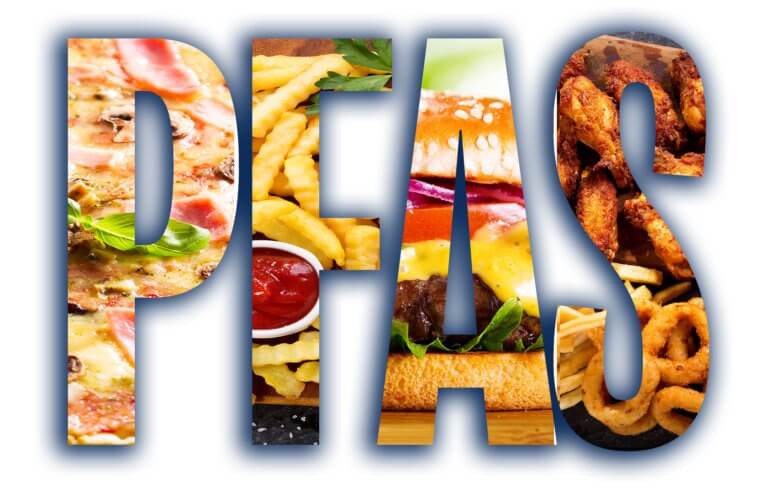
Would You Like Fries with That?
As a lay(wo)man, I can get lost when listening to our Environmental Standards Chemists discuss the matter of PFAS chemistry, especially as it relates to PFAS being detected in food and food packaging. Finally, I am at the point where I think I correctly spell and pronounce PFAS. Through their patient tutelage, I have come to learn that there are long-chain and short-chain PFAS compounds, and those PFAS molecules are made up of a chain of linked carbon and fluorine atoms. I’ve been told that the carbon-fluorine bond is the strongest in nature, which is why 98% of us can claim detectable levels of PFAS will be found in our blood. PFAS have had a way of sticking around since their introduction about 70 years ago. PFAS are also excellent at high-temperature resistance making them the ideal chemical for firefighting. And, lest we forget, they are awfully great at repelling water, and oil and grease. Hello pizza boxes, burger wrappers and popcorn bags.
I have questioned how it is possible to make specific claims about PFAS concentrations in food and food packaging when there is so little scientific toxicity information out there on the 6,000+ compounds. With the exception of drinking water, analytical method developments for PFAS analysis are still in their infancy. The current testing methods are only able to detect about 70 or so of the thousands of PFAS compounds. Being a skeptic, I wonder how much “residence” time your Arby’s cookies really spend in the bag. A cookie in my presence doesn’t have a chance.
Recently, Consumer Reports conducted PFAS surveys of 100 food containers and packaging from some of the best-known brands of restaurants and grocery stores in North America. The article relied on a recently developed analytical technique theoretically designed to be a proxy for total PFAS referred to as total organic fluorine (TOF). The article reported that TOF was found in most of the samples tested. As a result of the Consumer Reports article, lawsuits have been filed against McDonald’s and Burger King. But the King and Ronald are not alone. TOF was found in food packaging at Arby’s, Chik fil-A, and Trader Joe’s. At the time of the Consumer Reports writing, these products had some of the highest concentrations of TOF.
- Nathan’s Famous bag for sides – 876.0 ppm
- Arby’s cookie bag – 457.5 ppm.
- Burger King bag for cookies and French toast sticks -345.7 ppm
- Burger King Whopper wrapper – 249.7 ppm.
- Chick-fil-A sandwich wrap – 553.5 ppm.
- McDonald’s French fry bag – 250.3
- McDonald’s cookie bag – 250.0 ppm.
- Burger King chicken nugget bag – 165.0 ppm
- Taco Bell paper bag for chips – 145.0 ppm
The U.S. Food and Drug Administration (FDA) regulates PFAS as food additives. It has been slow to implement PFAS bans in food packaging even though FDA classifies PFAS as food-contact substances due to their potential to migrate into food. In July of 2020, FDA implemented a voluntary phase out of certain short-chain PFAS compounds.
Lacking a federal mandate, many states have proposed or have passed legislation banning the intentional use of PFAS in food packaging. While California, New York, Minnesota and Vermont have enacted legislation, it is anticipated that every state in the Union will eventually follow suit. From full removal of packaging containing PFAS to approved packaging substitutions, most states intend to formalize their PFAS in food and food packaging policies. It seems premature to regulate an entire class of compounds when there is so much still to be understood, but there are no signs that the White House administration or the aforementioned states have plans to “wait and see.”
There are steps you can take to determine if your products might contain PFAS or your manufacturing processes result in the involuntary (e.g., inadvertent) introduction of PFAS in finished products. Environmental Standards Chemists have been assisting food and beverage processing clients to assess their PFAS risk exposure and have helped them establish formal PFAS risk response corporate policies and procedures.

